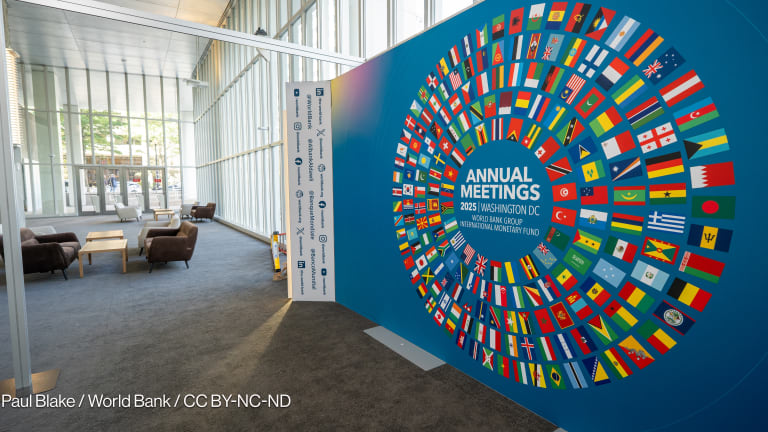
It’s becoming more and more clear to me that the world of economic development is bifurcating. On the one hand, we have the “old school” of development professionals with deep experience on the ground and working within a relatively rigid institutional and financial framework. This category would include many of the multilateral organizations and bilateral aid agencies for whom I have worked for much of my career — the World Bank, the U.S. Agency for International Development, the regional development banks, and so on. It also includes the ecosystem of consultants, implementers, contractors, and NGOs that has evolved to serve these traditional development agencies.
On the other hand, you have the “new kids on the block,” who hail from the private sector and represent huge reserves of capital. This includes millennials, who are slated to inherit $30 trillion from the baby boomers and who want to invest their inheritance responsibly; large companies with trillions of dollars of idle cash on their balance sheets, hoping that corporate venturing can replace traditional corporate social responsibility and mitigate disruption in many markets; and the new philanthropists, who want to invest rather than donate. These new players see social entrepreneurship and impact investing as a way to achieve both profits and purpose.
Generally speaking, these two worlds do not intersect much. Nowhere was that more evident than last month, when we saw the World Bank annual meetings in Washington, D.C., at the same time as the Social Capital Markets conference in San Francisco. Although a smattering of people from the U.N., the World Bank, USAID, and other development agencies attended SOCAP this year, they made up at most 5 percent of the crowd. Most people — many of them very young — came to SOCAP from the “new kids on the block” segment.
And yet, there was significant overlap in the topics of discussion at these meetings. Most notably, the focus on mobilizing trillions (rather than billions) of dollars to meet the U.N.’s Sustainable Development Goals. The SDGs envision a world free from poverty by 2030 and lay out 17 goals we have to meet to get there. I’ve been excited and impressed by the wide range of stakeholders who seem motivated by the SDGs. Corporates, civil society, governments: everyone seems to be talking about how to achieve the Goals.
Clearly, if the Goals will require $2.4 trillion more than is currently being spent via traditional development assistance and foreign direct investment, then private capital markets and larger investors will have to get involved. At the same time, it is estimated that, should the SDGs actually materialize, they will offer a $12 trillion business opportunity by 2030. That’s the kind of number that has companies and investors perking up their ears. Indeed, when the U.N.’s Business and Sustainable Development Commission laid out the business case for achieving the SDGs, it was confirming a growing sense that the SDGs represent good business.
But the new players and the market can’t do this all on their own — at least not on the accelerated schedule demanded by the SDGs. We need a “worlds collide” approach to solving the world’s most intractable economic, social, and environmental problems.
One promising solution gaining traction is blended finance. Blended finance refers to how grant funding from the more traditional development players can leverage and crowd in private capital. This happens when the subsidized funds reduce real and perceived risks, better enable both potential investee entrepreneurs and new investors to facilitate transactions, and bring together otherwise uneasy bedfellows to help them speak the same language.
At DAI, we are heading a consortium of “new” players (CrossBoundary, Tideline, and Convergence) to help USAID accelerate the development of blended finance. USAID is innovating at the frontier of blended finance with a new program called The Invest Project, which seeks to unlock the potential of private capital to drive inclusive growth in countries around the world. Encouraging investment in these markets — especially in high-impact areas important to USAID such as agriculture, financial services, infrastructure, energy, clean water, health, and education — requires new forms of collaboration between USAID and the investment community.
Whether through blended finance or other mechanisms, I hope that we see more of this dialogue and understanding across the two worlds, traditional and new. It’s time for a meeting of the minds, not only to mobilize the kind of cash required to meet the SDGs, but to come up with new ways to address development problems. If each of us continues to work solely on our own and within our comfort zones, we will struggle to generate the breakthrough models we so desperately need.
Join the Devex community and access more in-depth analysis, breaking news and business advice — and a host of other services — on international development, humanitarian aid and global health.








